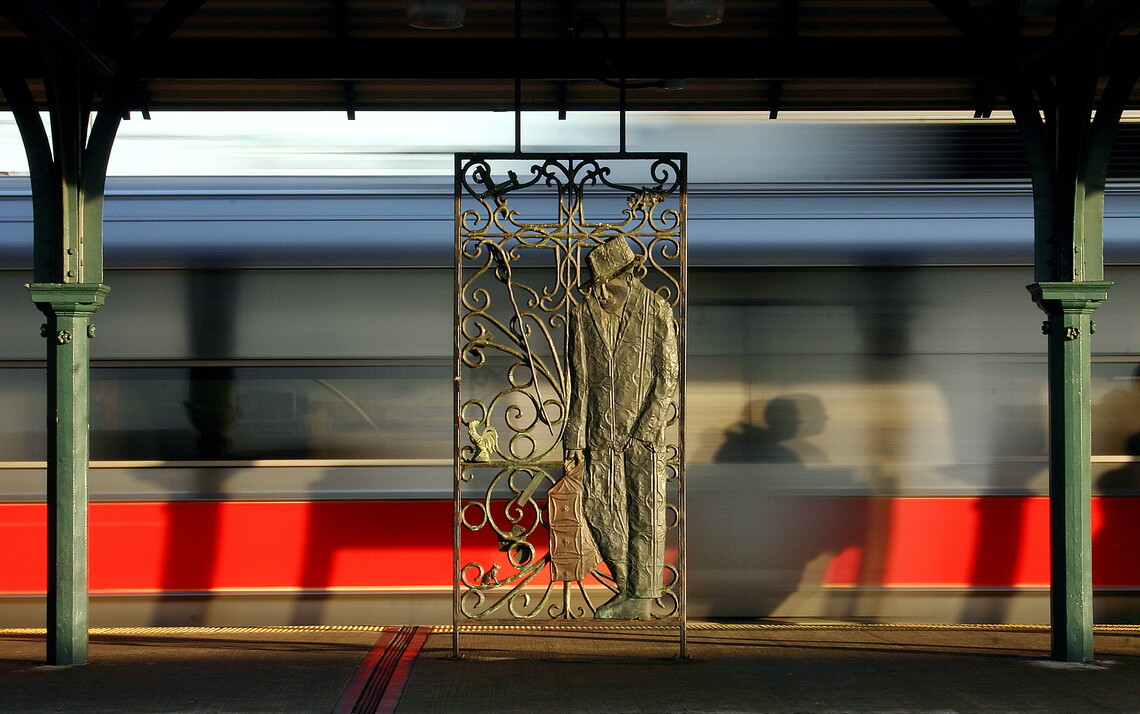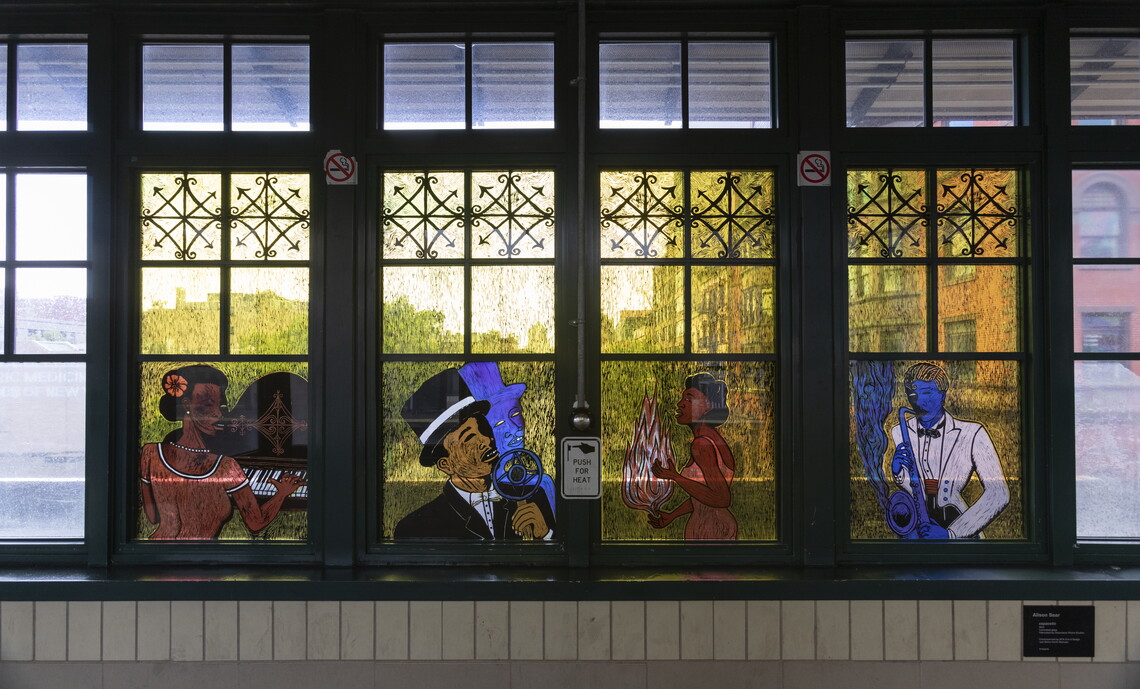
Hear the Lone Whistle Moan (1991) © Alison Saar, Metro-North Harlem–125 St. Commissioned by MTA Arts & Design. Photo: Rob Wilson.

copacetic (2018) © Alison Saar, Metro-North Harlem–125 St. Commissioned by MTA Arts & Design. Photo: Anthony Verde.
Saar’s original piece for the station, “Hear the Lone Whistle Moan” (1991), features a series of bronze relief sculptures on the north and south platforms of the station. The title refers to a spiritual that uses the train as a metaphor for the passage to heaven. Trains have often been associated by African Americans with escape, and the Underground Railroad in particular.
In 2018, as part of station improvement, Saar expanded her original project and created “copacetic,” a panoramic scene of imagined dancers, singers, musicians, and patrons enjoying Harlem’s heyday of the 1930s and ’40s. The glass artwork was created from the artist’s original woodcut prints, in homage to artists such as Elizabeth Catlett, Hale Woodruff, and Aaron Douglas. Learn more about these pieces and view more photographs on the Metropolitan Transportation Authority website.